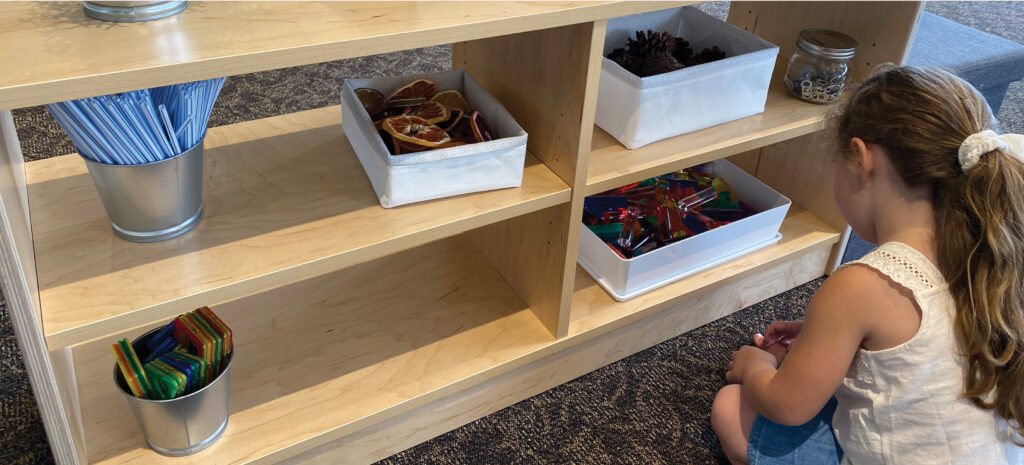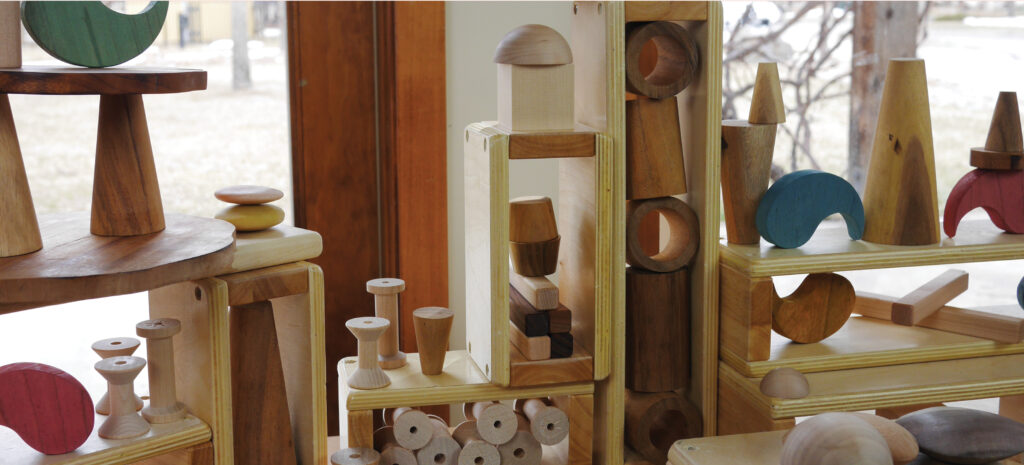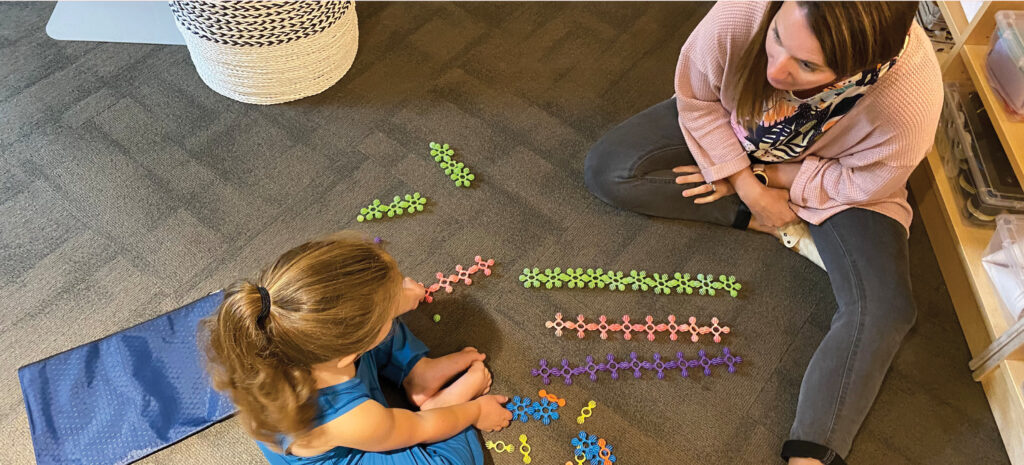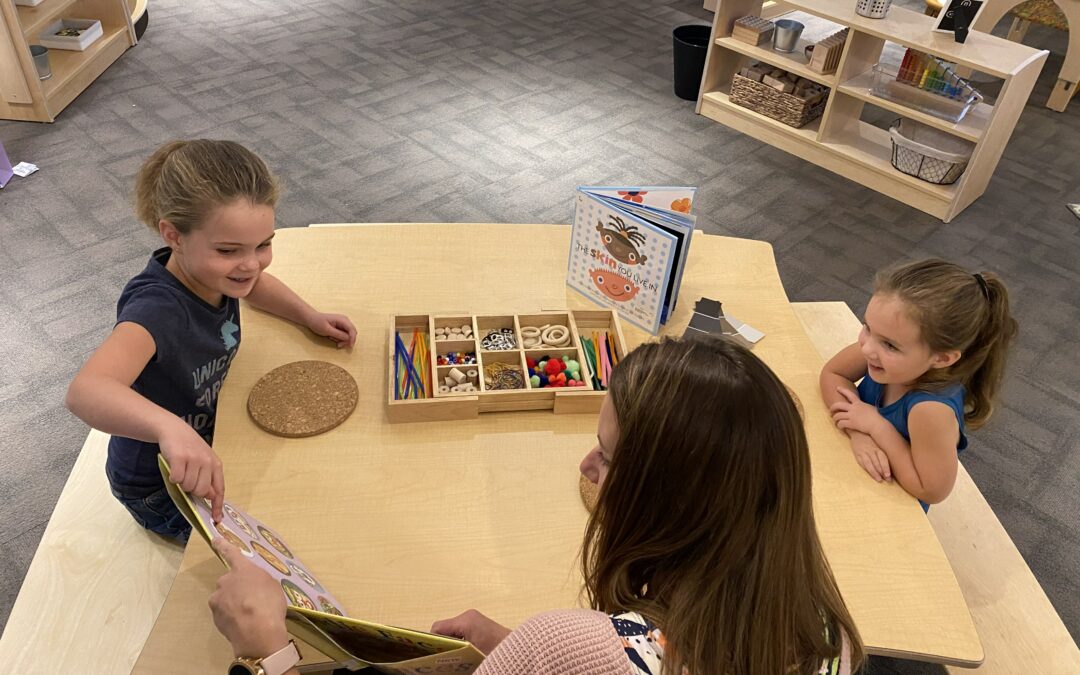By: Suzy Potts
Creekside Creative Academy
There is excitement, nerves, butterflies in the stomach, wonder, curiosity, and anticipation. The enormous potential of what is to come with the group of children coming together in a learning community is an amazing opportunity. I always find myself asking the following questions:
- How far will these children come?
- What gifts does each child bring to the classroom?
- What can I offer as an educator to these families and children?
The weight of facilitating a child’s development can be scary, but the power of the profession and what educators provide to children is incredible and one to be proud of!
Setting the pace, the expectations, and the mood for the year ahead is an important first step to a successful start-up. First impressions to children matter. They need to feel safe, secure, and that they belong. Without these positive elements considered, behaviors, emotions, and uncertainty spiral in a classroom, making reaching a child’s full potential difficult. There are some ways beyond the classroom setup and prep that will help facilitate a positive experience and a great start to your year.

Routines and Schedules
Following the child’s lead in programming is an important element to quality early childhood experiences. However, there is a fine line between uncontrolled chaos and that of a well managed, productive program, that honors the child and their development. Letting children do whatever they please, whenever they want may in the short term appear to work as the children are happy and you are not fighting to gain their attention and direct them. However, given a few days and weeks, this method turns a classroom to chaos and the educator becomes the referee trying to manage behaviors and redirect children. While the children may appear happy in the short-term, the long-term impact of this structure does not allow for a positive learning experience.
Routines and schedules can exist in a program that honors the child and follows the lead of the child. Children thrive with developmentally appropriate structures, routines, and expectations. It takes the uncertainty out of what comes next and allows children to know the rhythm of their day. The important part of this is keeping in mind a developmentally appropriate structure. This does not mean a 20-minute whole group time for 3-year-olds for example. Instead, focus on the rhythm of the day. For example, the day may start with quiet centers or activity bags, proceed into a morning meeting for 5 minutes, lead into free exploration time and then into a whole group learning activity. The balance between child-led exploration and teacher-directed exploration is important. Small increments of teacher-led time balanced with longer child-led activity time or exploration allows for a rhythm to form in the classroom.
While the length of each portion of your schedule may change during the year as children grow and mature, the routine and rhythm of the day will stay consistent. At the start of the year, you may read a book at morning meeting. However, at the start of the year this may last for 2 pages of the book whereas later in the year you can get through a whole book with the children in one sitting. The importance is that the educator is tuned into the children’s development and attention span, while continuing in this structure and routine. The day becomes predictable, and the children know that they can sit on the carpet for 5 minutes because after that they get to play, explore, or be hands-on once again. This control and rhythm allow children to feel confident, secure, and comfortable within the classroom so that they are set up for success to learn.

Introducing Loose Parts
If you are a program that utilizes loose parts in your space, this is an area that is worth considering as new children enter the space. Loose parts are not the typical toys and games that children are used to experiencing and interacting with at home. Therefore, this too is a new experience for them. While some children will take to the loose parts without a pause, others will wander the room pondering what to do with this “stuff” and where the toys are. This learning phase is one that is worth the short period of time it takes to adjust, as the benefits for the child’s creativity and critical thinking that comes from exploring loose parts is tenfold.
Consider starting small with the number of items you have offered on shelving. Too many loose parts can be overwhelming when starting out. A few well-placed baskets of loose parts on some shelving, a small variety of loose parts set next to a book the provokes the interest of children, and some items like a wind tunnel with scarves or ramps and balls are usually enough to get the children interested in something and give a good base. Items can then be introduced as the children feel more settled and comfortable in the room.
The limited quantity in the room also helps the all too common problem of the dump and runners. You know, the children that take a basket out, play with it for 10 seconds, dump the entire thing, and then are off to the next basket to do the same thing? With limited items out, this gives the educator the time to set boundaries and expectations for the children. Another way of encouraging children in this time to slow down and engage with an item rather than dumping and running is to ask them, “What is your plan?” Before releasing children to explore and play, ask them this question. By doing this, children slow down and consider what their plan is, which often results in them staying at a space for a longer length of time. If a child continues to buzz from one activity to the next, slow them down and coach them through making a plan and how to follow through with that plan before releasing them on their own to follow through with this deeper level of play.
One hesitation that educators often have is to leave a few familiar toys in the mix like small cars, plastic people toys, and other familiar toys to children. I encourage you to take these out of the room right from the start. By leaving these items in, they are the items that children will be drawn to immediately as they are predictable, known, and safe; they act as a crutch to the child. By taking these items away, children are guided towards playing and engaging with the loose parts, which allows the process of interacting with these items to happen much faster and more naturally.

Focus on Social-Emotional
While you may be eager to teach and expose the children to every learning opportunity possible, as quickly as possible in the year, I caution you to slow down. Especially this year when we are trying to find our footing during this pandemic, children need to feel safe and secure outside of their home before you can push the academics. This method of going slow to go fast can cause educators to become antsy because they feel as though nothing is being accomplished and the children are not learning anything. By slowing down, spending time getting to know them, giving them time to learn about the people around them, and learning how to navigate this new space, you will be able to teach the academic skills that much faster. The academic knowledge ends up being comparable in the end, but with the slower approach, you have honored the children in your program.
There is always the push-down effect that educators feel from where the child is going next. What if they are not ready for First Grade? What if they don’t know all of their letters and sounds by the time they go to Kindergarten? The questions and doubts are endless. What you must remember is that the school year is 10 months long. 10 months is a long period of time for development and growth. Year-end goals are not meant to be accomplished in the first month of programming, and that child even at the end of the year, is not meant to be able to complete and accomplish the next years goals of development. Slow down and honor the time that these children are in. I always ask educators to think about a First Grade class. As the teacher of that classroom, would you rather receive a class full of children that are social-emotionally competent and know how to critically think and work collectively; or would you rather receive a class full of children that have a sprinkle of base-level academic skills but constantly fight and behavior management takes up all of your time? Almost 100% of the time, a teacher will answer that they would rather have a class full of children that are well-adjusted and can critically think because they can teach the academic skills so much faster with that group. So take the time to go slow with these children and honor who they are in that moment, not who they will be next month or next year.


